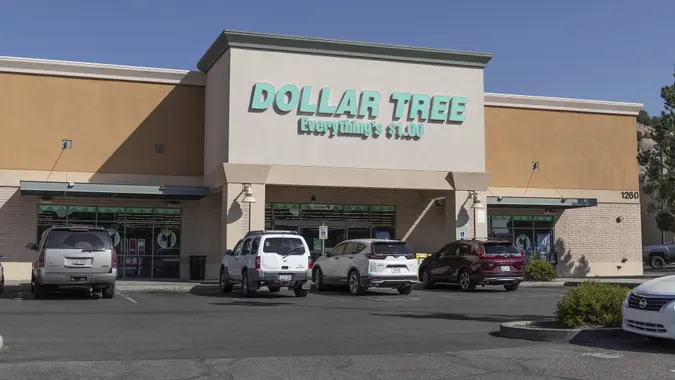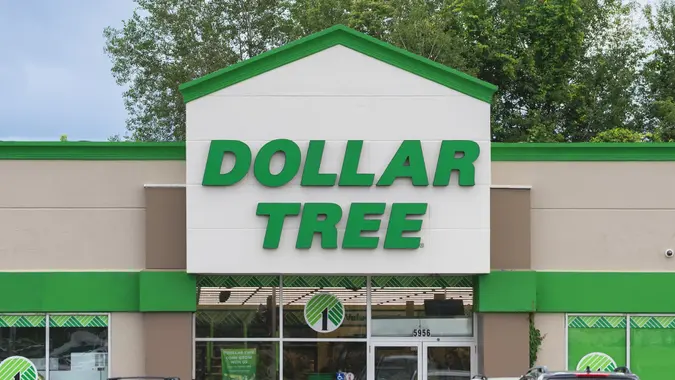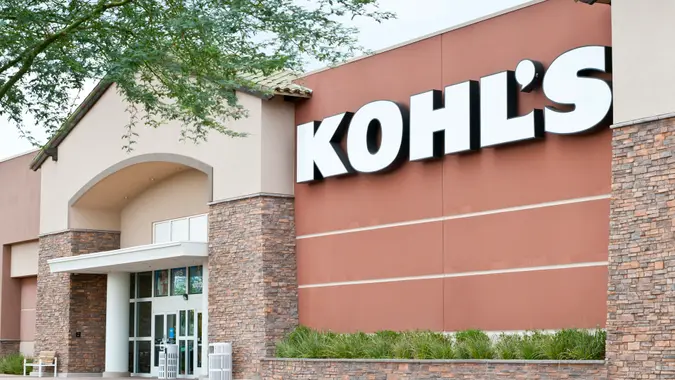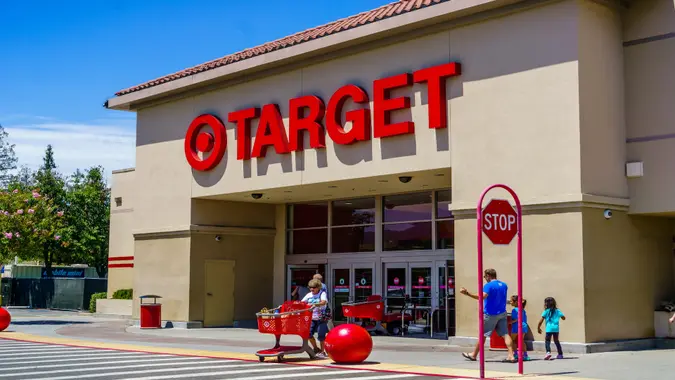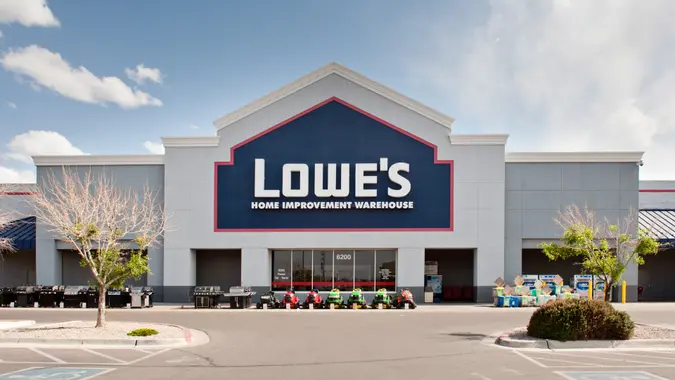5 Types of Stores Most Likely Eating Into Your Paycheck

Commitment to Our Readers
GOBankingRates' editorial team is committed to bringing you unbiased reviews and information. We use data-driven methodologies to evaluate financial products and services - our reviews and ratings are not influenced by advertisers. You can read more about our editorial guidelines and our products and services review methodology.

20 Years
Helping You Live Richer

Reviewed
by Experts

Trusted by
Millions of Readers
With so many options to purchase everything from necessities to treats, it’s easy to find deals that help you save money. But it’s also easier than ever to overspend.
If you find your cash disappearing quicker than you expect each month, these type of stores could be the culprit.
Convenience Stores
Financial experts have largely debunked the “Latte Factor” as an impediment to growing wealth. Skipping that $5 coffee isn’t likely to make you rich, especially if it’s something you enjoy occasionally. But daily trips to the convenience store can drain your bank account quicker than you can say “Big Gulp.”
For instance, a 20-ounce Pepsi at 7-11 starts at $2.69, depending on where you live. You can get the same item at a local grocery store for $2.29. If you shop the sales, you can find a six-pack of Pepsi (16.9 ounces) for just $4.49 for two at another local grocery store.
But it’s not just that prices at convenience stores are higher — it’s the impulse purchases you’re likely to make while you’re there that can eat into your paycheck.
Grocery Stores
While grocery stores tend to be much cheaper than convenience stores on staples like milk and eggs, they are also designed to cause you to overspend.
They put the enticing sweets and carbs on the end caps and in the center aisles so you’re more likely to splurge as you wander. To save money — and make healthier choices — stick to the perimeter of the store where you’ll find fresh produce, meat and poultry.
“Make a list before you go or use order pickup to avoid wandering aisles and adding unplanned items to your cart,” said Daniela Alvarado, certified financial coach at Golden 1 Credit Union.
You can reduce your grocery bills even further by purchasing store brands.
“Selecting store-brand products can save at least 20% to 25% over brand names,” said Austin Kilgore, analyst with the Achieve Center for Consumer Insights.
Wholesale Clubs
Wholesale clubs can offer lower prices than grocery stores for families that need to buy necessities in bulk. But as you wander the aisles and spot everything from new cookware to couches, it can be too easy to overspend.
Go into these stores with a specific list and your mind on your financial goals.
“Learn to differentiate between wants and needs,” Kilgore said. “If you spot a great price on the new washer and dryer you’ve been eyeing, but your old ones still work, the answer is that it’s a ‘want,’ — particularly if it means taking on debt to buy.”
He also recommended clearing clutter from your home weekly to give you a better grasp of what you already have and items you actually use.
“You’ll learn to avoid purchases of duplicate items or things you don’t really need,” he said.
Online Stores, Especially Those Tied to Social Media
Just as you might wander the aisles of your favorite wholesale club, many people find themselves wandering online, which can lead to impulse purchases. E-commerce sites tied to social media platforms, like the TikTok Shop, especially, can fuel overspending.
Alvarado shared one seemingly simple solution: “Disable ‘one-click payment’ to curb impulse purchases,” she said. Kilgore recommended avoiding Buy Now, Pay Later services, which are often prevalent on e-commerce sites and social media shopping platforms.
“As tempting as it can be for online purchases, see if you could manage the same purchase on a credit card, which you would pay off in full when the bill comes,” he said. “If you can’t do that, do you truly need the item?”
Subscription Box Services
Online subscription services, from meal delivery kits to Amazon’s Subscribe & Save program, can save time and money by delivering the items you need regularly. But they can also eat into your budget if you don’t track them carefully.
Americans spend more than $1,000 per year on subscriptions, including more than $200 on ones they aren’t using, according to a recent CNET survey.
Review subscriptions regularly. Many services offer free products and perks if you keep your subscription going. But don’t be afraid to skip a month or return items you don’t need from places like Stitch Fix. Think about it: If the item hadn’t arrived on your doorstep, would you have gone out to buy it?
Final Take
Ultimately, create a budget and consider whether every purchase fits into your financial plan.
“It doesn’t sound exciting, but it works,” Kilgore said.
“Being intentional about financial decisions can help avoid unnecessary spending,” Alvarado agreed. “Compare your expenses against your budget, adjust as needed, and review it monthly.”
 Written by
Written by  Edited by
Edited by 





